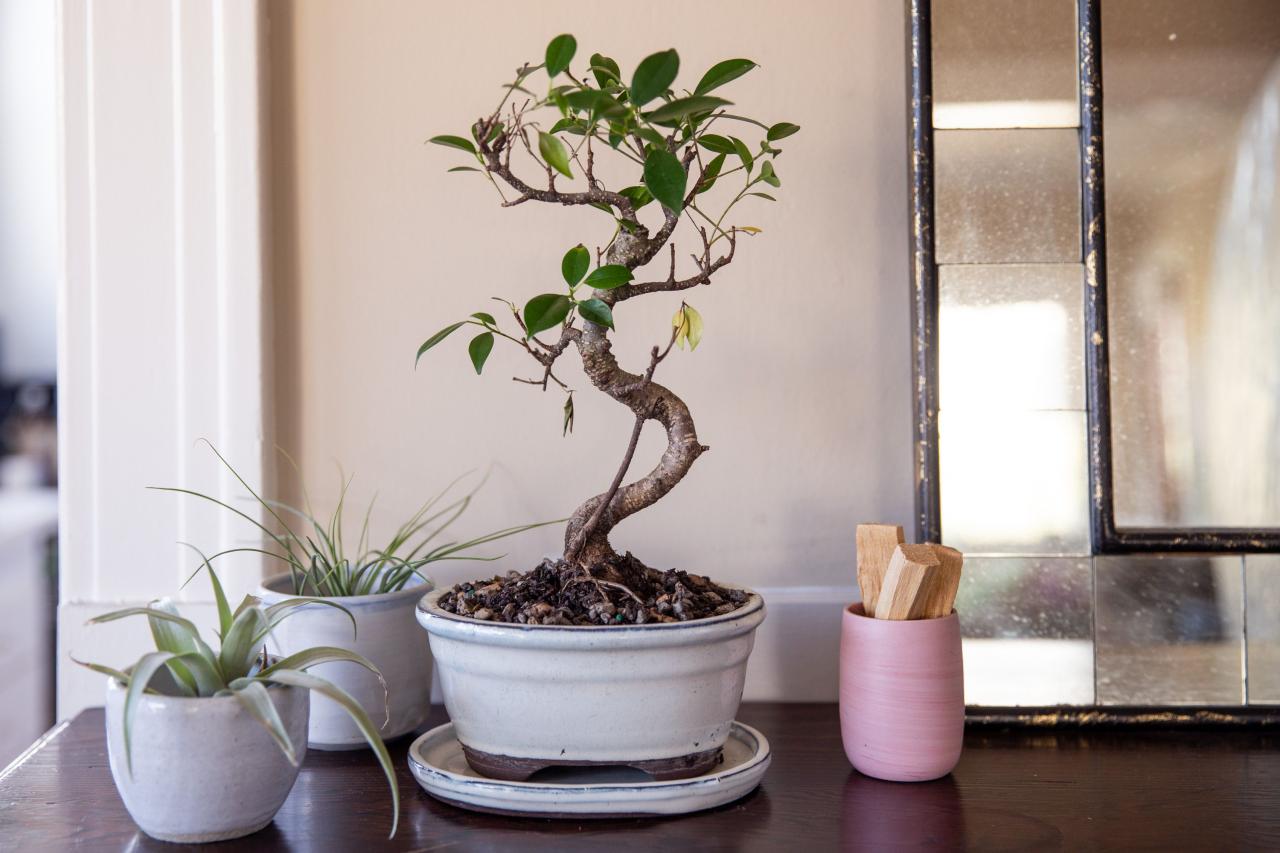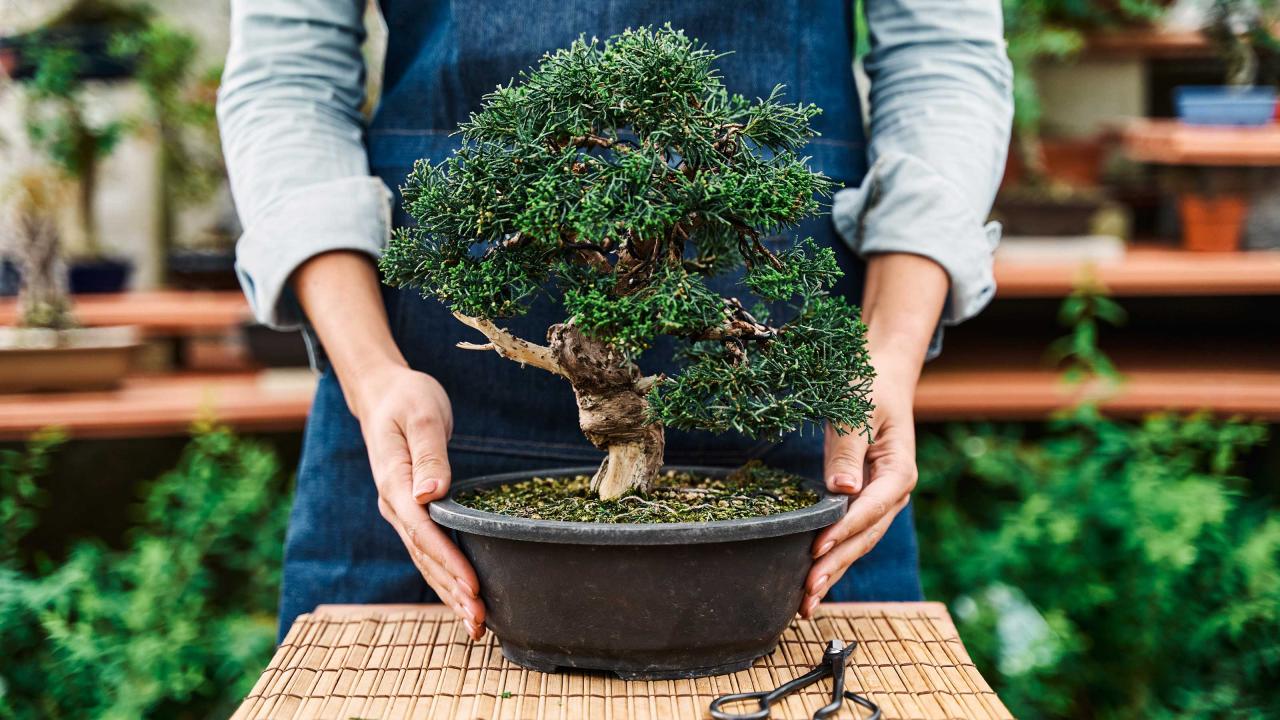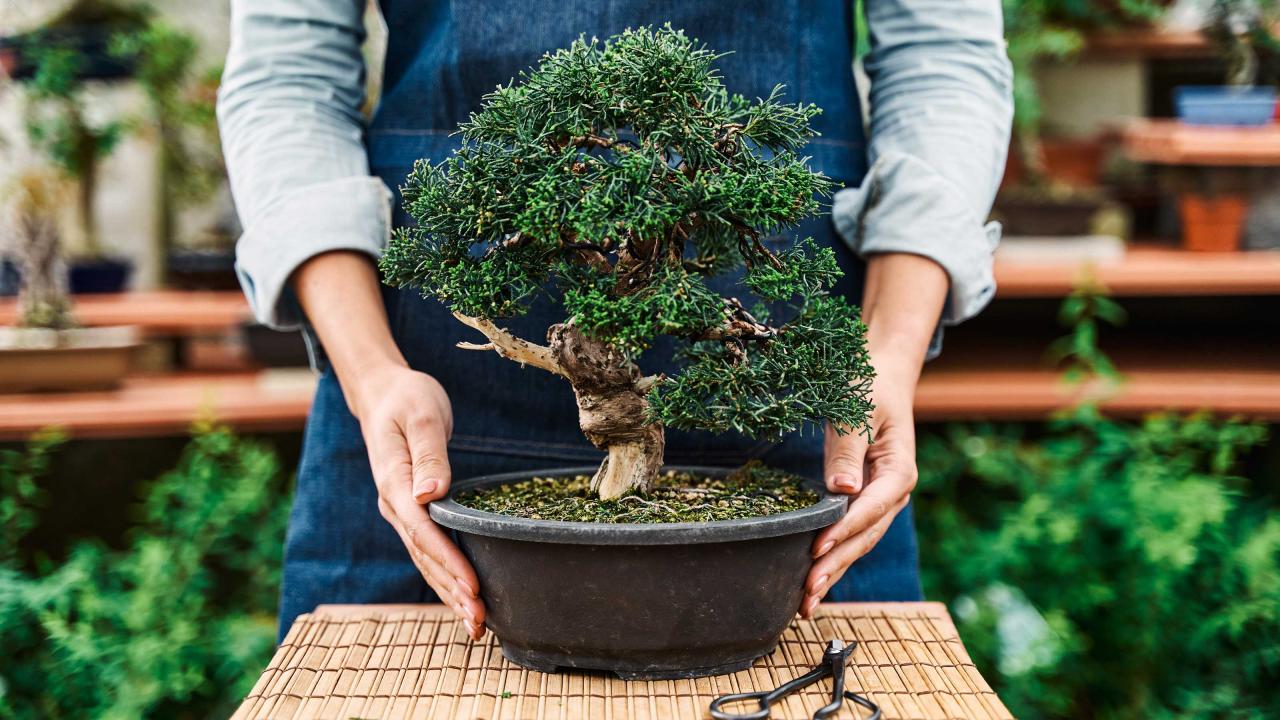Essential Care Tips For A Thriving Bonsai Tree: These miniature living works of art, meticulously crafted through careful cultivation, are more than just plants; they are living testaments to patience, dedication, and the enduring beauty of nature. The art of bonsai, rooted in ancient Japanese tradition, requires a deep understanding of the tree’s needs, and a commitment to nurturing its growth and development.
This guide will explore the fundamental principles of bonsai cultivation, from selecting the right tree to mastering essential care techniques, and understanding the artistry of bonsai design. Whether you’re a seasoned bonsai enthusiast or a curious beginner, this comprehensive resource will provide the knowledge and inspiration you need to cultivate a thriving bonsai tree that will bring joy and tranquility to your home.
Essential Bonsai Care Techniques
Bonsai care is a journey that demands attention to detail and a deep understanding of the tree’s needs. This section will delve into crucial techniques that form the backbone of successful bonsai cultivation.
Repotting Bonsai Trees
Repotting is a vital practice that refreshes the soil, promotes healthy root growth, and allows for shaping and styling. It involves carefully removing the tree from its pot, inspecting the roots, and replanting it in fresh soil.
Ideal Time for Repotting
The best time for repotting a bonsai tree is during its dormant period, typically in late winter or early spring, before new growth begins. This minimizes stress on the tree and allows it to adjust to its new environment.
Tools and Materials
To ensure a successful repotting process, gather the following tools:
- Sharp bonsai shears or pruning scissors:Used for trimming roots and shaping the tree.
- Bonsai pot:Choose a pot with appropriate drainage holes and a size that accommodates the tree’s root system.
- Bonsai soil:A well-draining mixture designed specifically for bonsai trees, often containing a combination of akadama, pumice, and lava rock.
- Watering can:For gently watering the tree after repotting.
- Gloves:To protect your hands during the process.
Steps for Repotting
Follow these steps for a successful repotting experience:
- Prepare the new pot:Place a layer of drainage material (like gravel or mesh) in the bottom of the pot to facilitate water drainage.
- Remove the tree from the old pot:Gently tap the base of the pot to loosen the tree. If necessary, use a tool to help pry the tree free. Avoid damaging the roots.
- Inspect the roots:Examine the root system for any signs of disease or damage. Trim any overgrown or circling roots with sharp bonsai shears.
- Place the tree in the new pot:Position the tree in the center of the new pot, ensuring the root ball is slightly above the rim of the pot.
- Fill the pot with bonsai soil:Carefully fill the pot with bonsai soil, packing it gently around the root ball. Leave a small space between the soil and the rim of the pot for watering.
- Water thoroughly:Gently water the repotted tree to settle the soil and hydrate the roots.
Watering Bonsai Trees, Essential Care Tips For A Thriving Bonsai Tree
Proper watering is essential for the health and well-being of a bonsai tree. It involves providing the right amount of water at the right time, taking into account factors like season, soil type, and pot size.
Factors Influencing Watering Needs
- Season:During the growing season (spring and summer), bonsai trees require more frequent watering than during the dormant season (fall and winter).
- Soil type:Bonsai soil is typically designed to drain quickly. Well-draining soil requires more frequent watering than heavier soil mixtures.
- Pot size:Smaller pots dry out faster than larger pots. Bonsai trees in smaller pots will need more frequent watering.
Watering Techniques
Use the following techniques to ensure proper hydration for your bonsai tree:
- Finger test:Insert your finger into the soil up to the first knuckle. If the soil feels dry, it’s time to water.
- Watering frequency:Water thoroughly when the soil is dry, allowing excess water to drain through the drainage holes. Avoid overwatering, as this can lead to root rot.
- Water quality:Use filtered or rainwater for watering bonsai trees. Avoid using tap water, as it can contain minerals that can build up in the soil and harm the tree.
Pruning Techniques for Bonsai Trees
Pruning is an art form that involves carefully removing branches and leaves to shape and maintain the bonsai tree’s desired style. Proper pruning techniques are crucial for achieving the desired aesthetic and ensuring the tree’s health.
Types of Pruning
There are several types of pruning used in bonsai cultivation, each serving a specific purpose.
- Pinching:A technique used to control growth and encourage branching. Pinch off new growth tips to promote the development of side branches.
- Leaf pruning:Involves removing individual leaves to reduce the tree’s overall size and encourage denser foliage.
- Branch pruning:A more drastic form of pruning used to remove unwanted branches, shape the tree, and maintain its overall size.
- Root pruning:This technique is typically performed during repotting to control root growth and encourage a healthy root system.
Visual Guide to Pruning Techniques
Here’s a visual representation of different pruning techniques used in bonsai cultivation.
Pinching:This involves removing the growing tip of a branch, encouraging the development of side branches.
[Image: A bonsai tree branch with a growing tip being pinched off using thumb and forefinger. The branch is labeled “Branch” and the pinched tip is labeled “Growing Tip”.]
Leaf pruning:Individual leaves are carefully removed from the tree to reduce its overall size and encourage denser foliage.
[Image: A bonsai tree with leaves being carefully removed using small pruning shears. The tree is labeled “Bonsai Tree” and the removed leaves are labeled “Leaves”.]
Branch pruning:Unwanted branches are removed to shape the tree and maintain its overall size.
[Image: A bonsai tree with a branch being pruned using bonsai shears. The branch is labeled “Branch” and the pruned section is labeled “Pruned Section”.]
Optimizing Bonsai Growth and Health
A bonsai tree, despite its miniature size, requires meticulous care to thrive. Beyond the essential techniques of pruning, wiring, and repotting, optimizing growth and health involves a multi-faceted approach. This includes providing the right nutrients, protecting against pests and diseases, and ensuring a suitable environment for your bonsai to flourish.
Proper Fertilization for Bonsai Growth
Fertilization plays a crucial role in supporting healthy growth and vibrant foliage in bonsai trees. Bonsai require regular feeding, especially during the growing season, as their limited root systems can struggle to obtain sufficient nutrients from the small pot.
- Types of Bonsai Fertilizer:There are various types of bonsai fertilizers available, each formulated with specific nutrient ratios tailored to the needs of different bonsai species. Popular options include granular, liquid, and slow-release fertilizers. Granular fertilizers provide a steady release of nutrients over time, while liquid fertilizers offer a more immediate source of nourishment.
Slow-release fertilizers offer a balanced approach, releasing nutrients gradually over several weeks or months.
- Frequency and Amount:The frequency and amount of fertilization depend on the type of fertilizer used, the bonsai species, and the season. Generally, bonsai trees are fertilized every two to four weeks during the growing season (spring and summer). The amount of fertilizer applied should be adjusted based on the size of the tree and the instructions provided by the fertilizer manufacturer.
- Signs of Nutrient Deficiency:Observing your bonsai for signs of nutrient deficiency can help you adjust fertilization practices. Common signs include yellowing leaves, stunted growth, and leaf drop. Consult a bonsai expert or a reliable resource for specific nutrient deficiencies and their corresponding remedies.
Identifying and Addressing Bonsai Pests and Diseases
Bonsai trees, like any other plant, are susceptible to pests and diseases. Early detection and appropriate treatment are crucial to prevent significant damage and maintain the health of your bonsai.
- Common Bonsai Pests:Some common bonsai pests include aphids, mealybugs, scale insects, and spider mites. These insects can feed on the sap of the tree, causing stunted growth, leaf discoloration, and even death. Identifying the specific pest is essential for selecting the right treatment.
For example, aphids can be controlled with insecticidal soap, while mealybugs may require a more targeted treatment with horticultural oil.
- Identifying Bonsai Diseases:Diseases can affect bonsai trees in various ways, causing leaf spots, root rot, and fungal infections. Identifying the disease is crucial for selecting the appropriate treatment. For example, root rot can be addressed by repotting the tree with fresh, well-draining soil, while fungal infections may require fungicide treatment.
- Preventive Measures:Preventive measures are essential for protecting your bonsai from pests and diseases. These include maintaining good hygiene, providing adequate ventilation, and avoiding overwatering. Regularly inspecting your bonsai for signs of infestation or disease can help you address issues early on.
Creating a Suitable Environment for Bonsai
Bonsai trees thrive in specific environmental conditions. Providing the right light, humidity, and temperature is essential for their growth and health.
Just like bonsai trees need careful pruning and shaping to maintain their miniature form, lawns can benefit from alternative, low-maintenance options. Consider replacing your traditional grass with a Chamomile Lawn: A Low-Water Alternative To Traditional Grass , which requires less water and offers a beautiful, fragrant alternative.
Similarly, regular trimming and fertilization are essential for keeping your bonsai healthy and thriving, ensuring its beauty for years to come.
- Light Requirements:Most bonsai species prefer bright, indirect light. Direct sunlight can scorch their delicate leaves, while insufficient light can lead to stunted growth and weak foliage. Place your bonsai near a window that receives ample indirect light, or consider using artificial lighting during the winter months when natural light is limited.
- Humidity Considerations:Bonsai trees, originating from humid environments, require adequate humidity levels to thrive. Low humidity can cause leaf drop and wilting. Increasing humidity can be achieved by placing the bonsai on a pebble tray filled with water, using a humidifier, or grouping bonsai trees together to create a microclimate.
- Temperature Preferences:The ideal temperature for bonsai trees varies depending on the species. Most bonsai species prefer temperatures between 60-75 degrees Fahrenheit. Extreme temperatures can stress the trees, leading to stunted growth, leaf drop, and even death. During the winter months, consider bringing your bonsai indoors or providing a frost-free environment.
Aesthetic Bonsai Design and Styling: Essential Care Tips For A Thriving Bonsai Tree

Beyond the technical aspects of bonsai care, the art of bonsai lies in its aesthetic design and styling. Bonsai artists strive to capture the essence of nature in miniature, creating living sculptures that evoke a sense of tranquility and beauty.
This involves selecting the right tree species, shaping its branches and foliage, and harmonizing it with its container.
Bonsai Styles
Bonsai styles are categorized based on their characteristic growth patterns and visual appeal. Each style has its own historical origins and unique features, reflecting the diverse artistic traditions and cultural influences that have shaped bonsai over centuries.
- Formal Upright (Chokkan):This is the most classic bonsai style, characterized by a straight, strong trunk and a symmetrical, conical crown. The apex of the tree should be directly above the base, creating a sense of balance and stability. The origins of this style can be traced back to ancient Chinese and Japanese art forms, where upright trees were revered for their strength and resilience.
- Informal Upright (Moyogi):In contrast to the formal upright, the informal upright style features a trunk that curves gently, creating a more natural and dynamic appearance. The branches are arranged asymmetrically, adding to the tree’s visual interest. This style is often inspired by trees found in natural landscapes, where they have adapted to their surroundings and weathered the elements.
- Slanting (Shakan):As the name suggests, the slanting style features a trunk that leans dramatically to one side, creating a sense of movement and tension. This style often depicts a tree that has been battered by strong winds or growing on a steep slope.
The branches should generally follow the direction of the trunk, adding to the overall sense of dynamism.
- Cascade (Kengai):The cascade style is characterized by a trunk that cascades dramatically over the edge of the pot, mimicking a tree growing on a cliff or mountainside. The branches are often trained to follow the downward curve of the trunk, creating a sense of flowing movement.
This style is particularly striking for its dramatic appearance and its ability to capture the beauty of nature’s extremes.
- Semi-Cascade (Han-Kengai):The semi-cascade style is similar to the cascade style, but the trunk does not cascade all the way to the ground. Instead, it reaches a point slightly above the rim of the pot, creating a more subtle and graceful effect.
This style is often used to depict trees growing on the edge of a cliff or a rocky outcrop.
- Broom (Hokidachi):The broom style features a trunk that divides into numerous branches, forming a dense, rounded crown that resembles a broom. This style is often inspired by trees that have been pruned or shaped by wind and weather, creating a compact and sturdy appearance.
- Literati (Bunjingi):The literati style is characterized by a slender, elegant trunk and a sparse, asymmetrical crown. This style is often inspired by the paintings of Chinese scholars, who valued simplicity and refinement in their art. The literati style is a testament to the beauty of understatement and the ability of bonsai to capture the essence of nature in its purest form.
Creating a Harmonious Balance
The choice of container is crucial in bonsai design. The pot should not only provide a suitable environment for the tree to thrive but also enhance its aesthetic appeal. The shape, size, color, and material of the pot should complement the style and form of the bonsai tree, creating a harmonious balance between the two.
A well-chosen pot can accentuate the tree’s natural beauty, highlighting its graceful curves, its intricate branching patterns, and its overall aesthetic impact. The pot should also be proportionate to the size of the tree, ensuring that it does not overwhelm or detract from its presence.
The color and texture of the pot can also play a significant role in the overall composition, adding subtle contrasts or creating a sense of unity with the tree’s foliage.
Just like the careful pruning and shaping techniques used for a bonsai tree, a chamomile lawn also requires specific care, especially in colder climates. To ensure a lush, fragrant lawn, you’ll need to consider factors like winter dormancy and the potential for frost damage, as detailed in How To Care For A Chamomile Lawn In Cold Climates.
Similarly, bonsai trees thrive on consistent attention to their watering, fertilization, and exposure to sunlight, creating a miniature landscape that requires dedication and a gentle touch.
Step-by-Step Guide: Formal Upright Style
The formal upright style is a classic example of bonsai design, demonstrating the principles of balance, symmetry, and proportion. Here’s a step-by-step guide to creating a formal upright bonsai:
- Select a Suitable Tree:Choose a tree species that is well-suited to the formal upright style. Some popular choices include Japanese black pine, Chinese juniper, and Japanese maple.
- Prepare the Trunk:Select a straight, strong trunk with a clear apex. Prune any branches that obstruct the central axis of the tree.
- Shape the Crown:Trim the branches to create a symmetrical, conical crown. The apex of the tree should be directly above the base, maintaining a balanced and stable appearance.
- Wire the Branches:Use aluminum wire to shape and position the branches, ensuring they are evenly spaced and follow the natural lines of the tree.
- Select a Pot:Choose a pot that is proportionate to the size of the tree and complements its style. A round or rectangular pot with a dark glaze is often preferred for the formal upright style.
- Plant the Tree:Carefully plant the tree in the pot, ensuring that the roots are spread out evenly and the trunk is centered.
- Maintain the Style:Regularly prune and wire the tree to maintain its shape and size. The formal upright style requires careful attention to detail and consistent maintenance to preserve its elegant form.
Closure

The journey of cultivating a bonsai tree is a rewarding experience, filled with the joy of witnessing nature’s artistry unfold before your eyes. By understanding the essential care tips Artikeld in this guide, you can create a thriving bonsai that not only enhances your home but also becomes a cherished symbol of your connection to the natural world.
From the meticulous art of pruning to the delicate balance of light, water, and nutrients, each step you take in nurturing your bonsai contributes to its unique beauty and longevity.
Commonly Asked Questions
What is the best time to repot a bonsai tree?
The best time to repot a bonsai tree is during its dormant period, typically in late winter or early spring, before new growth emerges. This allows the tree to focus its energy on healing the roots and adapting to the new pot and soil.
How often should I fertilize my bonsai tree?
The frequency of fertilization depends on the species of bonsai tree and its growth stage. However, a general rule is to fertilize every 2-4 weeks during the growing season, from spring to early fall. Use a balanced fertilizer specifically formulated for bonsai trees.
What are some common bonsai pests and diseases?
Common bonsai pests include aphids, mealybugs, scale insects, and spider mites. Common diseases include root rot, fungal leaf spots, and powdery mildew. Regular inspection and prompt treatment are essential for maintaining a healthy bonsai.
How can I create a suitable environment for my bonsai tree?
Bonsai trees thrive in bright, indirect sunlight. Avoid direct sunlight, especially during the hottest part of the day. Maintain a moderate humidity level, and ensure proper drainage to prevent root rot. During winter, provide a cooler environment to encourage dormancy.
